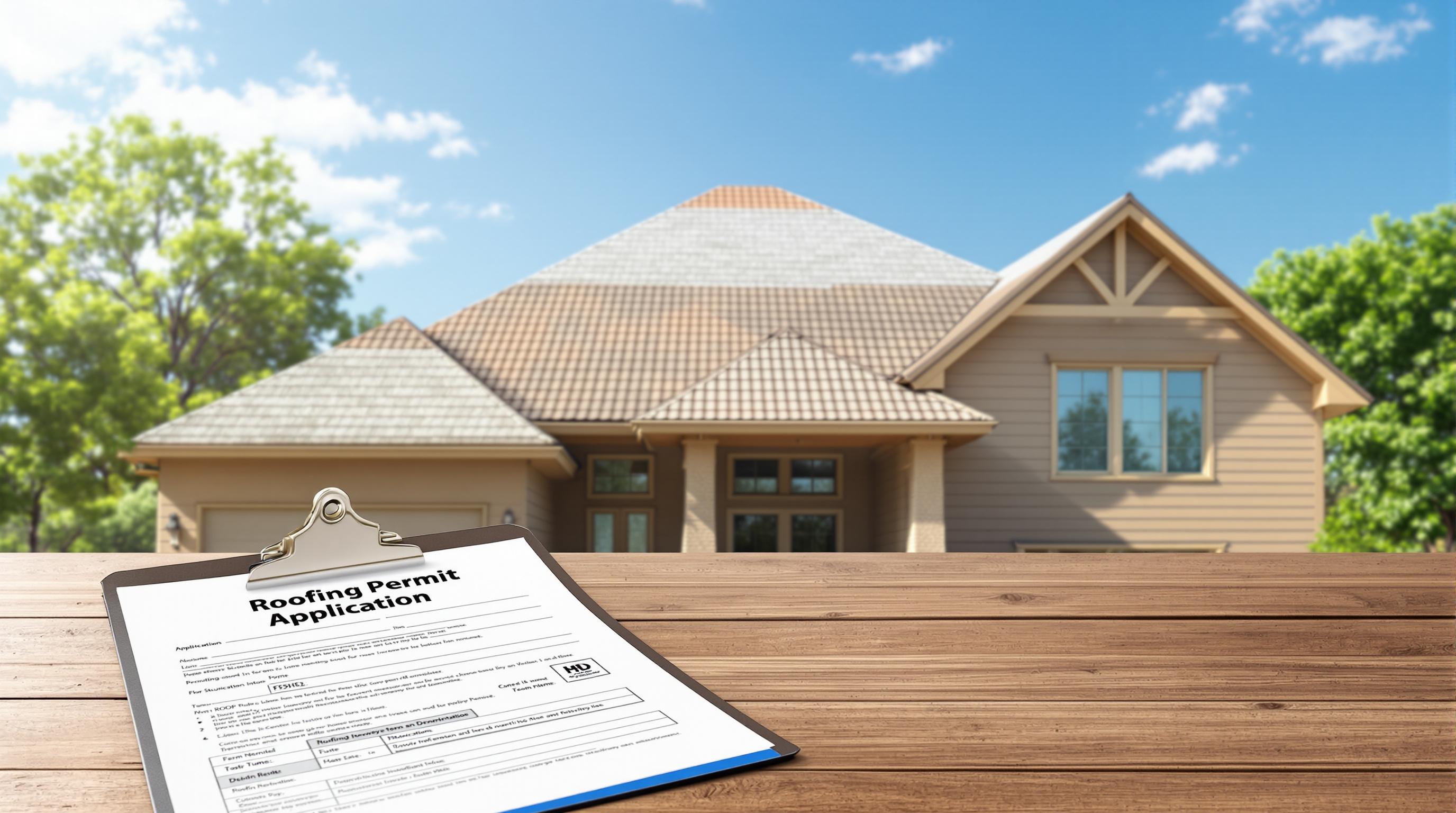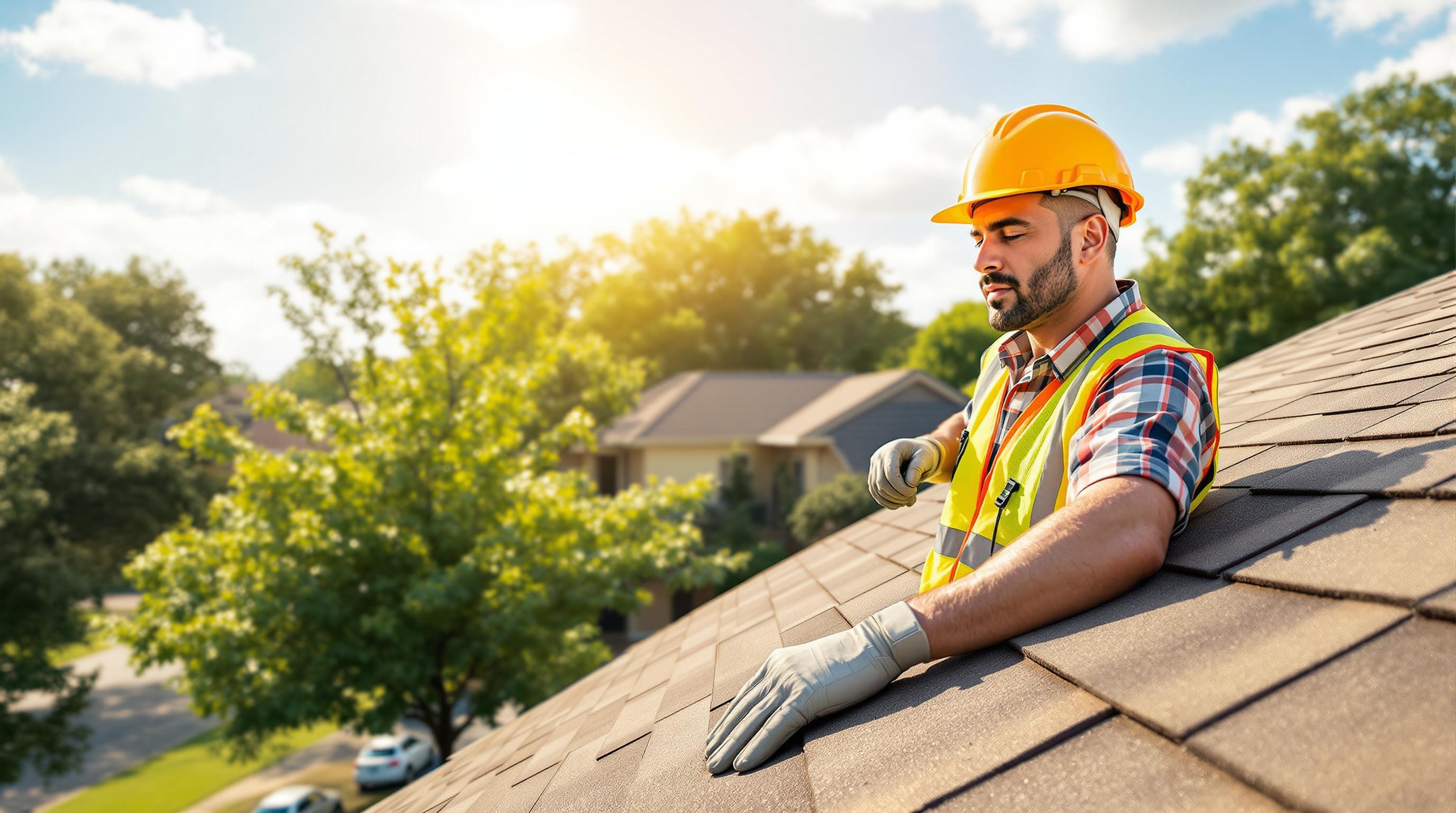Houston’s climate is tough on roofs. Intense heat, heavy rainfall, and hurricanes cause common problems like leaks, material damage, and mold. Here’s a quick look at the top roofing challenges and how to handle them:
- Heat Damage: UV rays and high temperatures weaken materials, causing cracks and aging.
- Water Damage: Rain and poor drainage lead to leaks and structural issues.
- Poor Ventilation: High humidity fosters mold and reduces roof lifespan.
- Material Wear: Houston’s weather shortens the lifespan of low-quality materials.
- Neglected Maintenance: Skipping inspections allows small issues to grow into costly repairs.
Solutions include: using durable materials, ensuring proper ventilation, cleaning gutters, and scheduling regular inspections. These steps can protect your roof and save you money in the long run.
Dangers of not getting your roof properly inspected or maintained
Problem 1: Heat Damage and Roof Aging
Houston's scorching heat puts a lot of strain on roofing materials. The unrelenting high temperatures and UV radiation wear down roofs faster than many homeowners expect.
Effects of High Temperatures
When the temperature climbs above 90°F, roofing materials face thermal stress. This happens because they expand and contract repeatedly, leading to tiny cracks and weakened seams over time.
| Temperature Effect | Impact | Signs |
|---|---|---|
| Thermal Movement | Causes stress and weakens seams | Cracks, visible gaps |
| Heat Buildup | Shortens material lifespan | Brittle or fragile surfaces |
In cooler areas, asphalt shingles can last 15-20 years. But in Houston's extreme heat, their lifespan often drops to just 10-15 years [2].
UV Radiation and Shingle Damage
UV rays are another big problem. Prolonged exposure breaks down roofing materials, leading to granule loss, curling, cracking, and color fading.
"Houston's summers are notorious for their sweltering heat and relentless sunshine. High temperatures and UV exposure can cause roofing materials to deteriorate over time." - Integris Roofing [2]
To combat this, consider UV-resistant materials and protective coatings. Proper attic ventilation also helps by reducing trapped heat. Heat-reflective roofing materials are another smart choice for Houston's climate [1]. Spotting damage early can save you from expensive repairs later.
While heat causes gradual damage, Houston's frequent heavy rains and storms bring more immediate challenges, like leaks and water damage.
Problem 2: Water Damage and Leaks
Houston's heavy rainfall and frequent storms pose ongoing challenges for homeowners, with water damage and leaks being a common issue. While heat gradually wears down roofing materials, water can cause immediate and severe problems if not addressed quickly.
Rainfall and Drainage Problems
Clogged gutters and poorly designed drainage systems often lead to water damage in Houston. When gutters fail to direct water properly through downspouts, it can back up under shingles, weakening the roof's structure. Regularly cleaning your gutters and ensuring a well-designed drainage system can help avoid these problems. Additionally, secure flashing is essential for protecting roof joints that are more prone to leaks.
Storm Damage to Roofs
Strong winds and flying debris during storms can tear shingles or puncture roofs, allowing water to seep in. To minimize risks, inspect your roof for weak spots before storm season, trim overhanging tree branches, and clear yard debris. After a storm, check for water stains on ceilings or walls - these are often early signs of leaks. Taking immediate action to repair storm damage can help protect your roof and save on costly repairs down the line.
Houston’s climate also brings high humidity and ventilation challenges, which can further impact your roof's longevity and performance. Address these issues alongside water damage to keep your roof in top condition.
sbb-itb-df3c0e6
Problem 3: Poor Ventilation and Humidity
Houston's high humidity, combined with inadequate roof ventilation, often leads to moisture buildup. This moisture can weaken your roof's structure and reduce its lifespan. Unlike heat alone, humidity adds stress by introducing water into the natural expansion and contraction of materials.
What Happens When Ventilation Fails?
When humid air gets trapped in poorly ventilated roofs, it causes materials to age faster, encourages mold growth, and weakens the structure. In Houston, where high humidity meets extreme heat, these problems are even worse. Mold thrives in damp, enclosed spaces, which not only harms your roof but can also pose health risks for your family.
How to Improve Ventilation
A proper ventilation system relies on several components working together effectively:
| Component | Purpose | Benefits |
|---|---|---|
| Soffit Vents | Draw in cooler air | Supports natural airflow |
| Ridge Vents | Let out hot air | Lowers attic temperatures |
| Power Ventilators | Circulate trapped air | Reduces moisture buildup |
Look out for these signs of poor ventilation:
- Higher energy bills caused by excessive attic heat
- Water stains on attic surfaces
- Mold growth that’s visible
- Attic spaces that feel excessively hot
To tackle ventilation issues, consult experienced roofing professionals who are familiar with Houston's climate. Regular inspections can catch problems early, saving you from costly repairs.
Fixing ventilation problems not only protects your roof from moisture damage but also helps your roofing materials last longer - something every Houston homeowner needs.
Problem 4: Material Wear and Tear
In Houston's tough climate, roofing materials face constant challenges. The intense heat, strong UV rays, and frequent storms can wear down even the sturdiest of materials, leading to more repairs and shorter lifespans.
The Risks of Poor-Quality Materials
Using low-quality roofing materials in Houston can be a recipe for disaster. On scorching summer days, roof surfaces can hit temperatures as high as 160°F, putting immense strain on materials [1]. Subpar materials tend to age faster, weaken the structure, and require frequent replacements - especially if they aren't built to handle Houston's unique weather conditions.
Choosing the Right Materials
To make your roof last in Houston, you need materials that can handle the local climate. Here are some top-performing options:
| Material Type | Benefits | Lifespan |
|---|---|---|
| Metal Roofing | Reflects heat, withstands storms | 40-70 years |
| Tile Roofing | Long-lasting, resists UV damage | 50+ years |
| Heat-Reflective Shingles | Reduces heat absorption, fights moisture | 20-30 years |
Tips for Better Performance:
- Opt for heat-reflective materials to manage extreme temperatures.
- Use materials specifically rated for high winds.
- Look for certifications ensuring suitability for Houston's climate.
Partnering with experienced local contractors is key. They understand the area's specific roofing challenges and can help with proper material selection and installation [3]. However, even the best materials need consistent maintenance to avoid unnecessary damage - a topic we'll dive into next.
Problem 5: Neglecting Regular Maintenance
Skipping roof maintenance can lead to avoidable damage, especially in Houston's tough climate. Small issues can quickly turn into big problems when exposed to intense heat, humidity, and storms.
Why Regular Inspections Matter
Experts suggest getting your roof professionally inspected twice a year and after major storms. These inspections help catch problems early, saving you from expensive repairs. Houston's unpredictable weather makes this especially important.
| Inspection Type | Frequency | Key Focus Areas |
|---|---|---|
| Routine Check | Every 6 months | General condition, ventilation, drainage |
| Post-Storm | After severe weather | Wind damage, loose materials, leaks |
| Seasonal | Spring and Fall | Prepare for hurricane/winter seasons |
Benefits of Hiring Local Roofing Contractors
Local contractors have a deep understanding of Houston's climate and can offer tailored solutions for roof upkeep. They can spot hidden issues, like early structural weaknesses or ventilation problems, that might go unnoticed without professional expertise [1].
Things to Keep in Mind for Roof Maintenance:
- Regular tasks like cleaning gutters, checking for leaks, and fixing flashing are essential for a healthy roof.
- Professionals can identify problems before they escalate into costly repairs.
- Many local contractors provide maintenance plans designed for Houston's specific climate.
Setting aside a portion of your home maintenance budget for roof care can save you from unexpected expenses. Staying ahead with maintenance ensures your roof can handle Houston's challenging weather [3].
Conclusion: Protecting Your Roof
Key Points for Homeowners
Houston's climate can be tough on residential roofs, so taking steps to protect them is crucial. A combination of good ventilation, durable materials, and regular upkeep can help shield your roof from wear and tear caused by the environment.
Here are some effective ways to protect your roof:
- Use heat-reflective coatings and proper insulation to minimize damage from the sun.
- Opt for reinforced materials and secure flashing to guard against storms.
- Ensure proper ventilation and drainage to avoid mold and rot issues.
Resources for Roofing Solutions
Once you've identified potential challenges and solutions, the next step is to find the right professionals to help you execute these strategies. Local roofing contractors understand Houston's specific climate needs and can provide customized solutions for your home.
The Houston Roofing Directory is a helpful tool, offering a list of licensed contractors who specialize in addressing the demands of Houston's climate. These experts can recommend and implement the best options based on your roof's needs.
To keep your roof in top shape:
- Apply sun-reflective coatings to extend its lifespan [5].
- Install ventilation systems to control humidity [1].
- Schedule professional inspections twice a year, especially before storm seasons [4].
- Keep records of all repairs and upgrades for insurance purposes [1].
With the right strategies and expert help, you can safeguard your roof and ensure it performs well for years, even in Houston's challenging weather.


